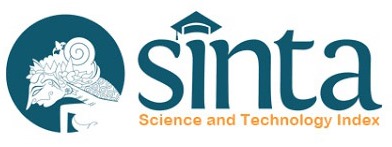Optimasi Hidrolisis Mikrobiologi serta Bioaktivitas Antibakteri, Antioksidan, dan Antikoagulan Hidrolisat Ulva lactuca
Abstract
Ulvan dalam hidrolisat Ulva lactuca merupakan senyawa bioaktif yang potensial di bidang biofarmakologi. Proses hidrolisis untuk memperoleh golongan senyawa ini dapat dilakukan secara kimiawi atau mikrobiologi. Proses mikrobiologi merupakan teknik yang potensial karena lebih mudah dan berbiaya rendah dibanding metode kimiawi. Namun, penelitian yang menggunakan teknik hidrolisis mikrobiologi masih sangat terbatas, terutama terhadap U. lactuca. Oleh karena itu, optimasi diperlukan agar mendapatkan teknik dengan hasil rendemen hidrolisat yang maksimal. Penelitian ini bertujuan untuk melakukan optimasi proses hidrolisis secara mikrobiologi dan menelaah aktivitas biologis ekstrak hidrolisatnya. Proses hidrolisis mikrobiologi dilakukan dengan teknik padat dan cair menggunakan kapang endofit dari tanaman Enhalus dan isolat bakteri laut dari rumput laut Eucheuma cottonii. Teknik mikrobiologis ini juga dibandingkan dengan teknik kimiawi (HCl). Optimasi dilakukan terhadap variabel durasi waktu (3, 6, 9, dan 12 hari) hidrolisis. Hasil penelitian menunjukkan bahwa rendemen metode hidrolisis cair menggunakan bantuan kapang endofit dari tanaman Enhalus (51,67%) dan isolat bakteri laut dari rumput laut E. cottonii (52,67%), lebih tinggi dan berbeda secara signifikan (p<0,05) dibandingkan teknik kimiawi (37,02%). Waktu hidrolisis terbaik yang ditemukan adalah selama tiga hari. Sementara itu, karakterisasi bioaktivitas menunjukkan bahwa hidrolisat U. lactuca memiliki potensi sebagai bahan aktif antikoagulan, tanpa adanya aktivitas sebagai antioksidan (IC50>200 ppm) maupun antibakteri (menghambat 36% Staphylococcus aureus dan Pseudomonas aeroginosa).
ABSTRACT
The Ulvan in Ulva lactuca hydrolysate is a potential bioactive compound in the biopharmacology field. The hydrolysis process to obtain this class of compounds can be done in various ways, both chemically and microbiologically. The microbiological process is a potential technique because it is easier and cheaper than the chemical method. However, studies conducted with the microbiology hydrolysis technique are still very limited, especially for U. lactuca. Thus, optimation is needed to reveal an appropriate technique that produces the maximum yield. This study aimed to optimize the microbiological hydrolysis process and identify the biological activity of the hydrolyzed extract. The microbiological hydrolysis process was performed by solid and liquid techniques using microbial endophytic fungi from Enhalus plants and marine bacteria isolated from Eucheuma cottonii. The microbiology technique was compared with chemical techniques (HCl). Optimization was also carried out on the variable of hydrolysis duration (3, 6, 9, and 12 days). The results showed that yield of liquid hydrolysis method using the microbial endophytic fungi from Enhalus plants (51.67%) and marine bacteria isolated from E. cottonii (52.67%), were higher and significantly different (p<0.05) than that of chemical techniques (37.02%). Moreover, the best hydrolysis duration was found in three days. Meanwhile, bioactivity testing showed that the hydrolysate was a potent anticoagulant agent, but not prospective as antioxidant (IC50>200 ppm) or antibacterial agent (36% Staphylococcus aureus and Pseudomonas aeroginosa inhibition).
Keywords
Full Text:
PDFDOI: https://doi.org/10.15578/jpbkp.v15i2.657
Refbacks
- There are currently no refbacks.
JPBKP adalah Jurnal Ilmiah yang terindeks :
ISSN : 1907-9133(print), ISSN : 2406-9264(online)
This work is licensed under a Creative Commons Attribution-NonCommercial-ShareAlike 4.0 International License.








